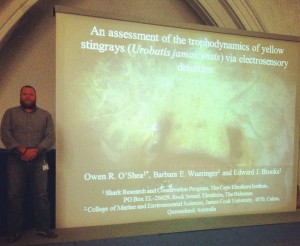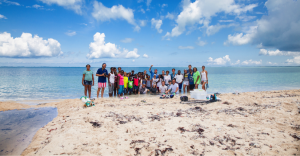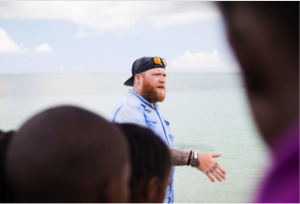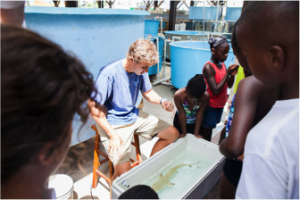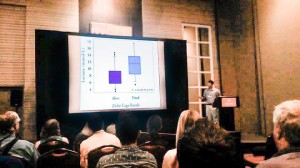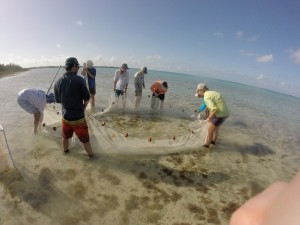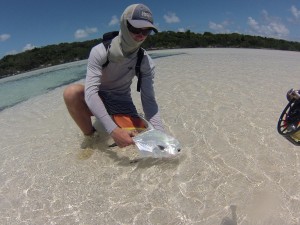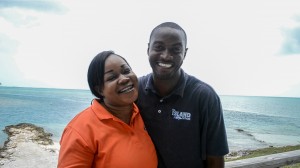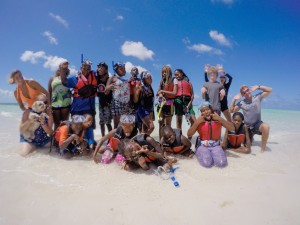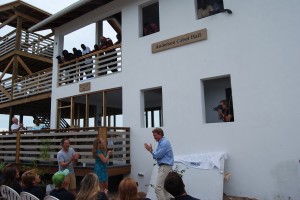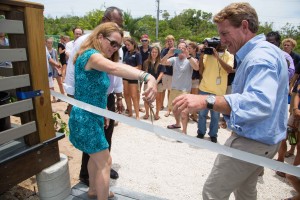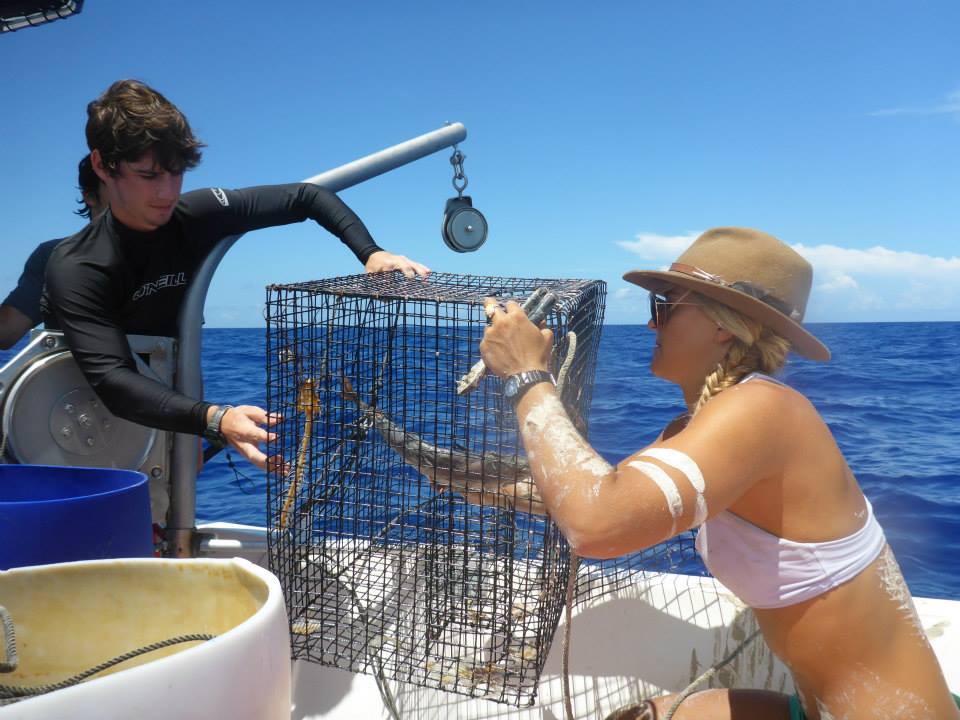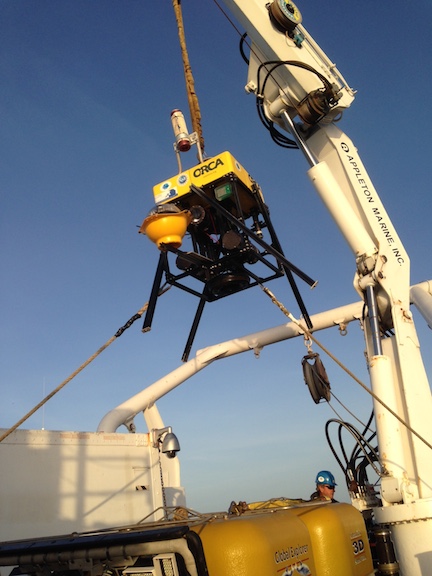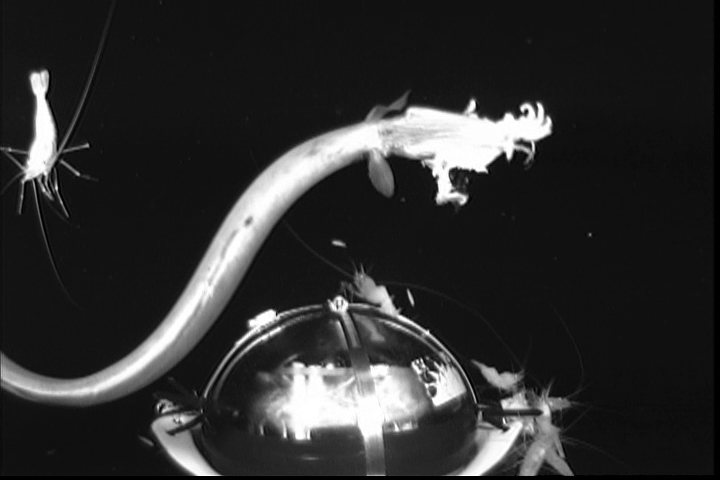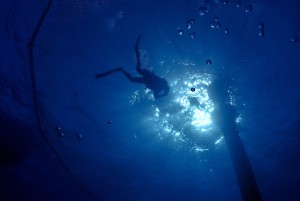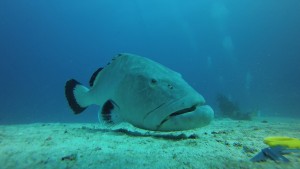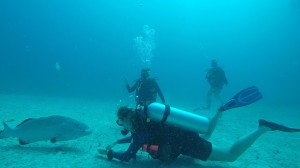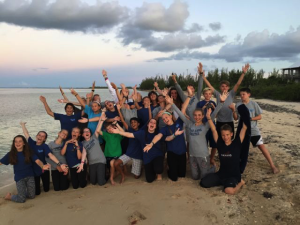
Last week, the Educational Programs team was fortunate enough to host 28 amazing 8th grade students and four chaperones from Brookwood School in Massachusetts for five days of learning, exploring, and unforgettable nature experiences. During their time here, the students got the full Island School experience; they were up each morning at 6am for morning exercise, they participated in dish crew duties, they nominated caciques for each day, and they spent fun-filled days learning about the various ecosystems around Eleuthera.
One highlight of the trip included a morning spent with the Center for Sustainable Development crew learning about biodiesel, solar power, and aquaponics, where the students actually got to make a half-gallon batch of biodiesel, build a solar powered light bulb, and fillet tilapia from the aquaponics system! Another afternoon, after a lesson on sustainable fisheries and aquaculture, the students went out to CEI’s aquaculture cage where they got to snorkel with schools of jacks and spadefish, and were lucky enough to spot multiple large reef sharks and two turtles! For many students, this was their first time swimming in the deep, open ocean, and though it was intimidating, every student tackled the challenge with excitement and ended the afternoon with some fun time spent jumping off the roof of the Cobia into the deep blue waters below. The students also enjoyed a dinner out at Sharil’s where they got to eat her famous fried lionfish, and followed that up the next morning with the lionfish team, learning more about the invasive species and dissecting multiple lionfish.
To finish the week off, everyone sat around a campfire on the last night, roasting marshmallows and reflecting on their experience. Many students commented on how much closer they felt with their class, and how they hoped to bring those stronger relationships back to school to enrich their 8th grade year, while others talked about their newfound love of the ocean, everything they had learned about sustainability, and what they were going to do back home to help protect our environment.
The chaperones also kept a blog throughout their week here to keep families back home updated on all of their kids’ adventures, including detailed accounts of each day’s activities and some great pictures! Throughout the week, the chaperones provided students with various writing prompts to respond to and reflect on, and some of those responses are included in the blog as well. One prompt asked the students to write as if they were speaking to grade below them, 7th graders who would get the next opportunity to visit the Island School. One response stood out in particular:
“… everything about this place is amazing! Even the morning exercises I dreaded turned out to be some of the most fun things I’ve ever done. In school, you think so many times that you won’t apply things that you learn in school to life in general. However, here at the Island School you will apply everything you learn in about an hour and the whole time while learning, while applying, and while experimenting. You will have the most fun you’ve ever had. So step out of your comfort zone and join your classmates in a trip to the Island School.”
– Kishan P.
We’re so glad this incredible group had as much fun at the Island School as we did having them here! We can’t wait to see Brookwood back next year for another amazing week.

